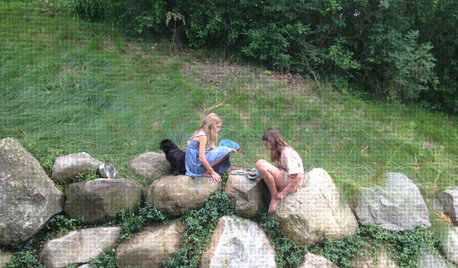Hi all,
I thought I'd throw this post together for anyone who may be interested in the phenomenon of viral infections in orchids. The disclaimer to this topic, of course, is that: a) it is not my intent to promote mass paranoia and b) I wouldn't go chucking every one of your plants because they have one or two of the following symptoms. (ie take everything I say with a grain of salt):) I'm simply trying to share what I've learned in the last few months after observing my plants and now finally having some real data to support what I saw. It might also be a reminder to put into practice good cleanliness when handling plants. Oh, and it's also a tribute to these beauties that will sadly no longer reside in my home - it's my way of saying goodbye.
{{gwi:196708}}
Here is phalaenopsis 'Nobby's Amy', my very first orchid and now confirmed to be infected with cymbidium mosaic virus. Some of you may remember a post I made back in October 07 concerning a strange occurrence with this phal, when it randomly dropped it's newest growing leaf (you can see it on the bottom right hand corner of the figure). I do not know whether that was a viral symptom or not, but it doesn't seem to match the color and patterning now.
You can see on the top right corner, the strange red markings. This image was taken today.
This is now the 3rd leaf in a row for this phalaenopsis that has developed these markings on the back, not to mention severe pitting reminiscent of spider mite damage (they may be involved - I now spray regularly with safers just to be safe) on the surface of the leaves.
New leaves are *NEVER* symptomatic until mature.
I am discarding all of my phals that have developed this leaf pitting syndrome (I was asking about this here)- my hunch is that it's an opportunistic infection, and could be an indicator of bad conditions, virally-induced weakening of plant immunity etc...but I'm not going to take the risk.
{{gwi:140733}}
This is a cattleya that also started acting funny, and has now been confirmed to be infected with oncidium ring spot virus. The tell-tale sign is the color break in the petals (C). I have talked to several people and it seems that this is a pretty reliable marker for viral infection. I have 2 other catt-types that are still under quarantine for possible infection, and I think I'm going to use their flowers as an indicator. Strangely, to the best of my knowledge, this plant was never in contact with another plant in my collection since I got it 3 years ago, suggesting an insect vector may be involved.
Fig. A shows the weird black markings on a new leaf.
Fig. B shows red patches similar to the ones seen in the phal.
These markings do NOT appear on old leaves but only on the newest leaf growth.
I don't know whether both of these are directly caused by the virus. Not shown but also observed is extensive leaf pitting, which I believe to be mainly bacterial.
As you can see, it's rather difficult to distinguish between viral, fungal and bacterial infections. From what I know as a human immunologist and from what I've read in articles and forums from people much more experienced that myself, it's likely that virus infections combined with less than optimum growing conditions will result in easier susceptibility to bacterial and fungal attacks. The end product is a weak plant that may display some viral symptoms, but may also display many other disease symptoms that could 'mask' the typical viral markings.
Out of the 8 plants I tested (and I chose the most suspicious ones), 6 were not infected with either oncidium ring spot, or cymbidium mosaic.
{{gwi:140734}}
Fig. A and Fig. B are two different cymbidiums that actually prompted the entire virus screening. After bringing the cymbidium in Fig. B home (disease free), it developed these markings, and the cymbidium next to it also showed similar markings within a few weeks. Strangely, they are infected with neither of the 2 common viruses. I suspect that a dormant fungal infection was brought in with the plant, which woke up and infected the other cym in the vicinity under the non-greenhouse conditions that are my growing area. I'm pretty glad that they'll be okay, and I will treat with fungicide as well as increase air movement in the area.
Fig. C shows the typical oncidium spotting that is commonly seen. It's not a virus. These developed after I took the plant outside for the summer - probably fungal or bacterial because our summer has been extraordinarily wet.
Fig. D shows an incredibly suspicious leaf from my cookara bill. The purple patterning is very reminiscent of the purple patches on the infected phal and catt. These only appear on new leaves. Since this is a catt type I'm going to monitor it's flowers when it decides to flower again, to see if anything is funky. For now, I'm going to take extra precautions with this one.
===
I think the take home msg I got from all of this is that virus spreading isn't as rampant as one would be fearful to believe (2/8 of my most suspicious plants), and things like bacteria and fungus spores, not to mention insects can be spread much easier, so it's probably best to treat these things first; any viral symptoms will probably be hidden underneath all the opportunistic infection anyway. I know that it's possible I still have infected plants in my collection - the thought is unnerving (kinda like having a ticking time bomb underneath you're bed) but I am also strangely reassured that despite sloppy-ish practices (although to be honest the only 'sins' I've committed is sharing of water and not regularly checking/spraying for sap sucking buggers...I sterilize all cutting tools, pots, stakes, and I wear gloves) the virus didn't 'take over'...at least I can say to myself - relax..it's not like ebola.
Needless to say, good cultural practice, and cleanliness are the best preventative measures, but I think always keeping a close check on plants is also key (I was pretty negligent with my collection this summer).
Hopefully you've learned something from my experiences (besides the fact that I'm a terrible orchid grower and don't deserve to keep these amazing creatures under my roof! I'm not that bad...honest...I promise I'll post some lovely pictures of things I coaxed to bloom next month :S). I've really been pretty lucky prior to this summer in terms of pests - minimal fungal bacterial or insect damage. This was a real wake-up call, and I guess that's a positive thing because I'll be much more careful from now on.
-Cal
















terrysealey
highjack
Related Discussions
fungus and virused plants
Q
Mosaic virus symptoms in flowers?
Q
My Virused Cat
Q
I wonder if silica would help roses resist viruses?
Q
xmpraedictaOriginal Author
petite_orange
stitzelweller
xmpraedictaOriginal Author
littlem_2007
cjwatson
stitzelweller
mehitabel
carolinn_on